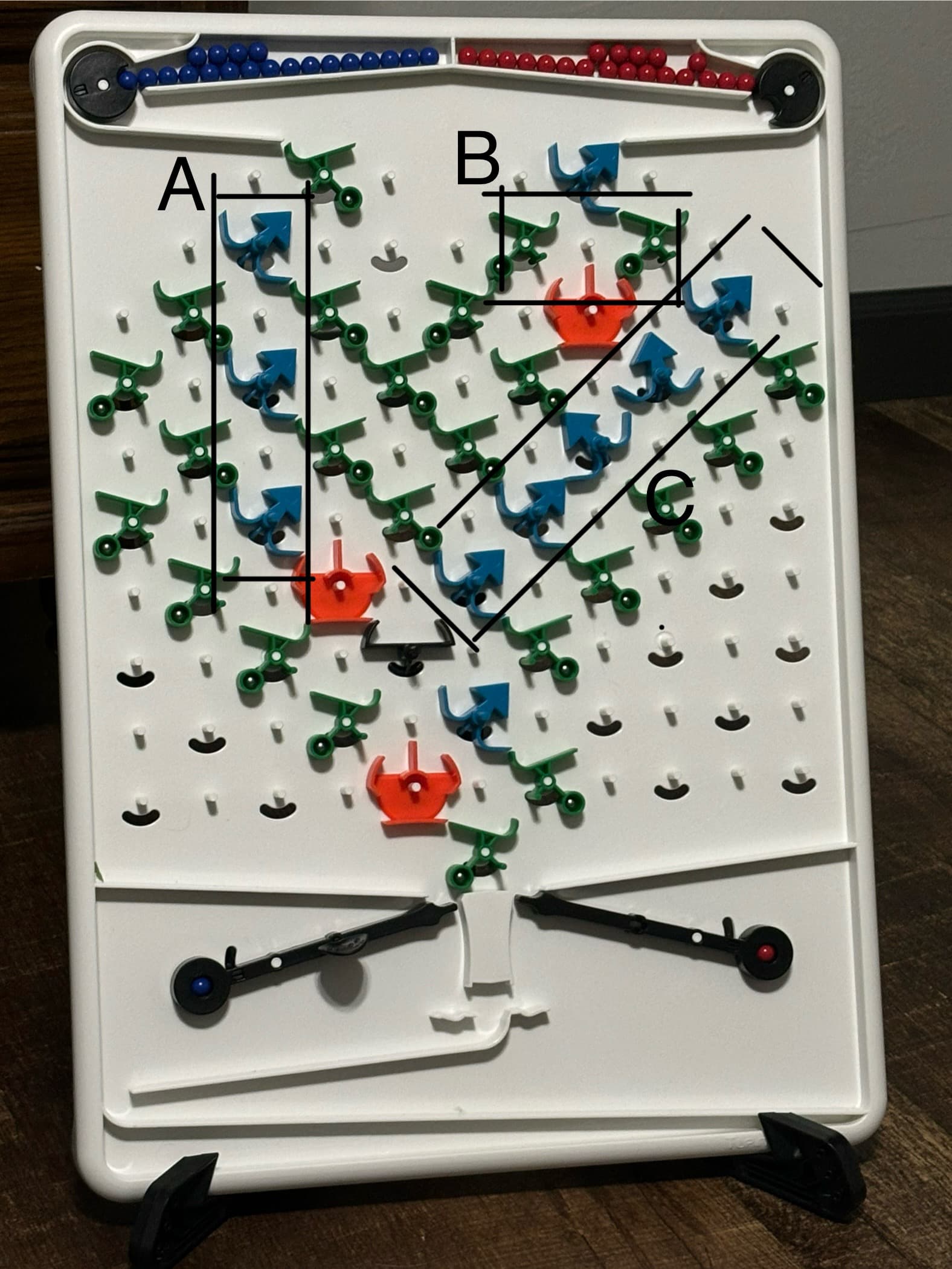
A times B is equal to C
A is 3 bit, B is 2 bit, and C is 5 bit.

A times B is equal to C
A is 3 bit, B is 2 bit, and C is 5 bit.
Without explanation it was quite a challenge to understand, how it works. But now I think, I’ve got, how to use it
Tested with 4x3 → 12, 1x3 → 3
But multiplying by other values, than 3, e.g. 2, 1 seem not to work. Pointing both ramps to the left (multiply by 0) even leads to a endless loop of red balls. Or how the B and the non-operand bits (bits outside of A and C) are supposed to work?
It should intercept eventually, I dont know why it would loop forever.
The endless Loop is because the ramp-left-positions are connected together and in the end are both triggering a new red ball.
Question: Why is the down left non-operand-bit in the picture pointed right? Shouldn’t it be pointed left?
Yeah I set it up wrong for the picture. Sorry.
The Problem is that if the first ramp is pointed left, it does two 2-turns per left count and if it’s the second ramp, it has two 1-turns per count